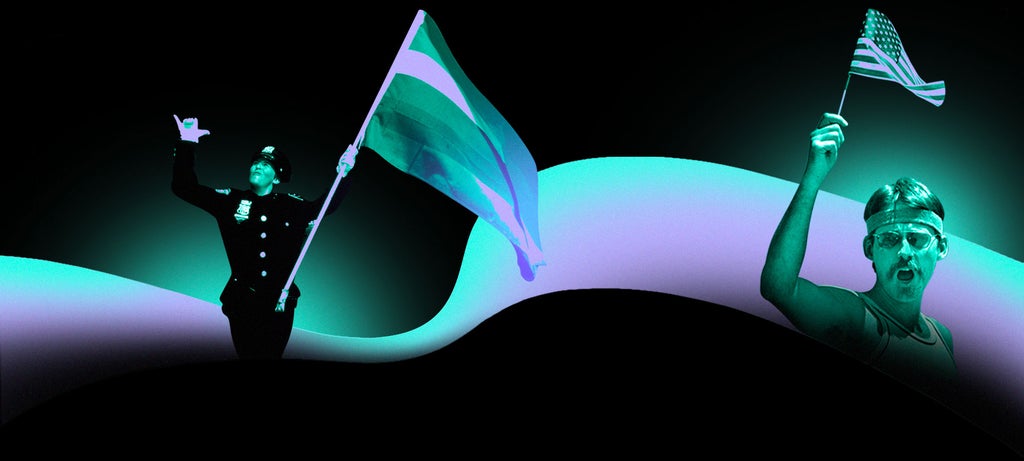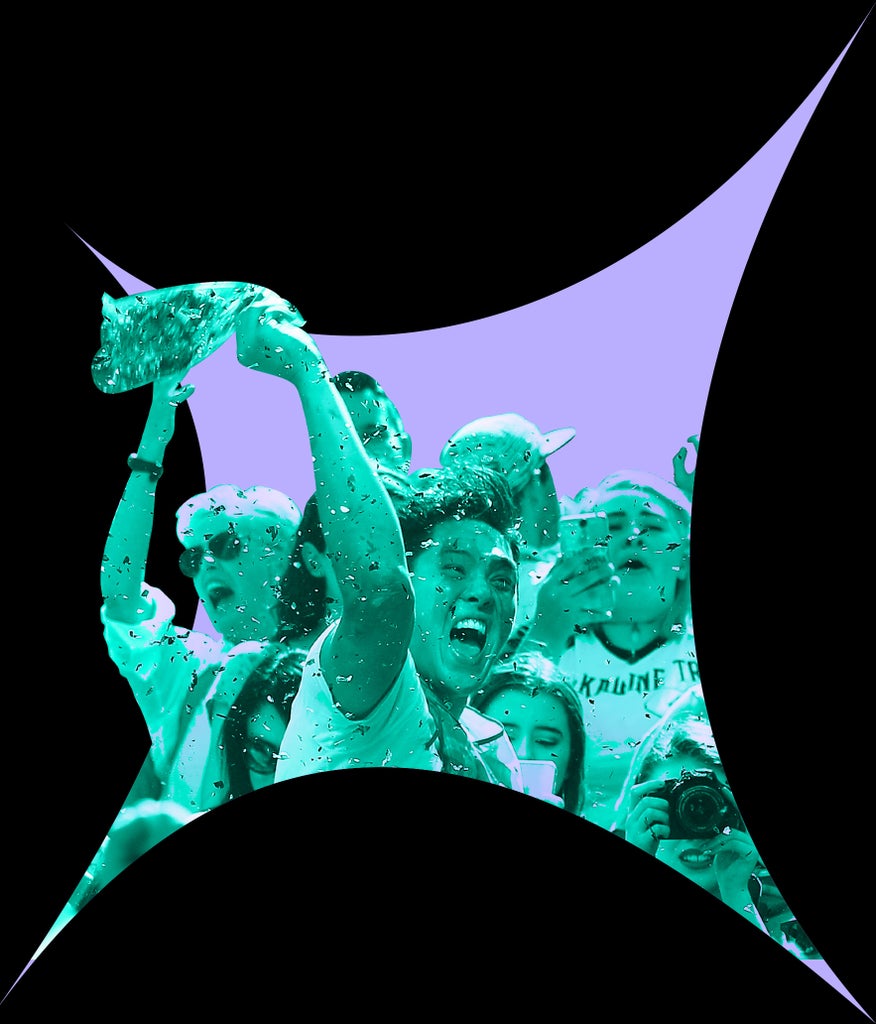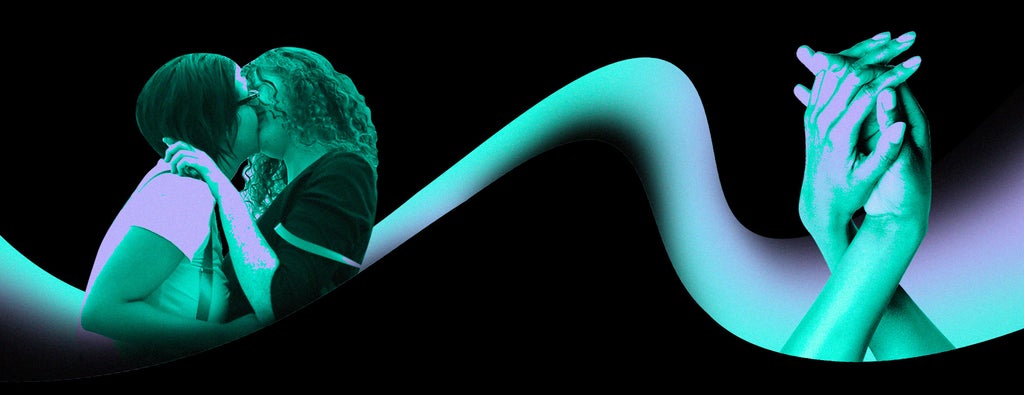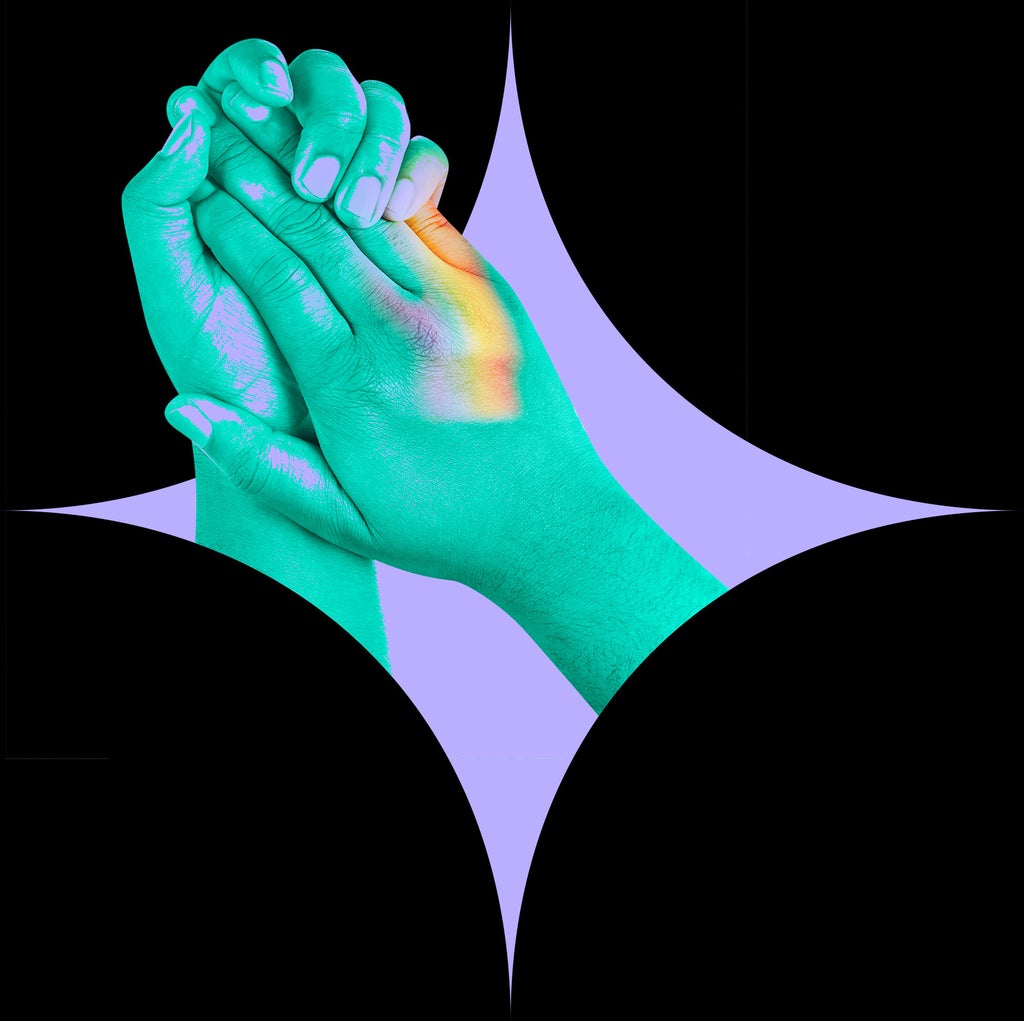LGBTQ+ people are not strangers to fighting for the right for equal treatment, both under the law and in the culture. So it feels particularly meaningful that this month, when we celebrate Pride, is when America has erupted in protests. The issues being called out — police brutality against Black people and the systemic racism that has allowed it to go unchecked — are not new. But after enduring months of a pandemic that affects Black and brown people disproportionately, years of a president who aligns himself with white supremacy, and unceasing news about the murders of Black people, from George Floyd to Ahmaud Arbery to Breonna Taylor to Tony McDade, people across the country had had enough.
The year is half over, and the world has been forever changed.
The start of my year felt very different, on almost every level. I was barely two months into a new job at Refinery29. And on New Year’s Eve, I proposed to my girlfriend. I knew she didn’t want a diamond, so after months of searching, I found a band that’s half gold and half silver; a beautiful, minimal statement. I spent the last day of 2019 on the phone with her parents and mine, calls and FaceTimes filled with joyful tears. I hid the ring in the couch, and after we’d returned from a fancy dinner reservation, I surprised her with it. There were even more joyous, tear-filled phone calls. We are incredibly lucky to have families and friends that were thrilled for us, as two lesbians.
As happy as we were to be engaged, we spent the next couple of months coming to terms with the fact that, because of the coronavirus pandemic, planning a wedding won’t be realistic, not for a long time. But, until a few years ago, I wasn’t so sure planning a wedding would ever be in the cards for me at all — not legally at least. I came out in the spring of 2008, a couple of weeks after I turned 19. Gay marriage was not recognised as a civil right across the U.S.; its validity was only recognised in a couple of states, and not in New York, my home. President George W. Bush, who had been in office for the entirety of my adolescence, had supported a constitutional amendment that would ban gay marriage, rendering it illegal even in those places that had voted in favour of it. I didn’t know if it was something I’d see legalised in my lifetime.
But, I did: The Supreme Court legalised gay marriage across the country in 2015, a decision celebrated by President Barack Obama, who had, in his original presidential campaign for the 2008 election, not been in support of it. It was an emotional day. I still have a saved voicemail from my grandma, who called me to say congratulations, as though it was something I had personally accomplished. Of course, the fight had started long before I had been born.

By the time gay marriage was legalised in the U.S., it had been 46 years since the riots at New York City’s Stonewall Inn kicked off the gay liberation movement. As the story goes, the first bottle was thrown by Silvia Rivera, a Black Latina American trans woman. And it was queer and trans people of colour who stayed at the forefront of the Stonewall Riots for five days. Similarly to the protests happening across the country right now in response to the police killing of George Floyd, the queer community at Stonewall was rioting against endemic police brutality.Though it’s become extremely corporate in nature, Pride was born out of a violent protest. As we’re seeing now, oftentimes, the only way to get power to pay attention to widespread inequality is to riot.
Back then, there were no legal protections for gay people; not only could you be fired for being gay, you weren’t really allowed to be gay in public — gay bars were regularly raided because gay people gathering in public were considered disorderly, and “soliciting” same sex relations was illegal. Gender, too, was legislated; you could be arrested for “cross-dressing.” Being gay was considered a mental illness in the DSM until the 1970s. Because of this, the LGBTQ+ community was not visible to the untrained eye; it couldn’t be. Representation for queer women was mainly relegated to pulp novels, where the characters usually died or went back to their husbands in the end.
Now, 51 years after Stonewall, the world looks very different. Home streaming services are chock-full of options for those seeking queer representation. Fancy an L Word, reimagined and rebooted for a queerer, more diverse audience? Check. How about a bisexual teen with superpowers? Check. What about a witchy Sabrina reboot with a trans supporting lead? Check, check, check. In fact, a total of 10.2% of all characters on TV were LGBTQ in the 2019-2020 broadcast season, according to GLAAD, which is a record high. And if you’re into fashion, well, that’s getting pretty queer too. Top models and designers are openly, proudly, and perfectly casually queer. Even all the magazines, the same ones that used to pretend we didn’t exist, now run stories throughout June about beautiful queer and trans women. Musicians are out, and actors — especially the young ones — are suddenly in queer relationships — they might even get more famous because of them. Only 48% of Gen Z identifies as exclusively heterosexual. Everyone, it seems, is at least a little bit gay right now.
It’s a culture that I couldn’t have imagined when I was growing up, when I felt like the only lesbian in the entire world.

And yet, even though we may be more visible than ever, we are perhaps more at risk than we’ve been in decades. An older activist friend once said to me about being queer in New York City in decades past: “The West Village was where gay people went to be gay, and where homophobes went to beat them up.” In 2015, it felt like the U.S. was finally a safer place to be gay; just over a year later, the arrival of the Trump White House meant we would be facing a steady attack on our rights and our lives. Not long after, the FBI reported a spike in hate crimes against the LGBTQ+ population.
It isn’t just people on the street who are behaving violently and homophobically — the government is also rolling back our rights. Most recently, to name just a few: In 2019, the Trump administration announced it would be cutting $250 million from the The Global Fund to Fight AIDS, Tuberculosis and Malaria; announced plans to ban transgender service members from openly serving in the armed forces; failed to uphold guidelines that protected LGBTQ+ people from housing discrimination (including homeless shelters); stopped collecting data about LGBTQ+ youth in the foster care system; and refused to guarantee transgender people health care under the Affordable Care Act. So far this year, the Department of Justice filed a court brief in the Western District of Kentucky calling anti-LGBTQ discrimination “not a sufficient government interest,” siding with private businesses who want to deny services to LGBTQ+ people. And, as reported by The National Center for Transgender Equality, nine different federal agencies proposed rule changes “that would encourage agencies to claim religious exemptions to deny help to certain people while receiving federal funds.” Certain people being, of course, LGBTQ+ ones.
Perhaps even more pervasive than the legislation has been the government-sanctioned microaggressions. For three years in a row, Trump hasn’t mentioned the LGBTQ community while recognising December 1 as World AIDS Day. The Department of Education removed “sexual orientation” and “gender identity” as terms used to track bullying. Trump has attacked gay journalists on Twitter. He has praised anti-LGBTQ+ leaders. He’s attempted to prevent the Pride flag from flying at Stonewall, which is a monument and therefore federal land, and has completely barred U.S. Embassies from flying it.

And, not surprisingly, with this political backdrop, studies show that acceptance for LGBTQ+ people has declined year over year, especially among young adults. Last year, a national survey conducted on GLAAD’s behalf by The Harris Poll, called the Accelerating Acceptance Index, found that 36% of people ages 18 to 34 were “very” or “somewhat” uncomfortable learning that a family member was LGBTQ+, up from 29% from 2018 (43% of men, specifically, said they were uncomfortable). Gay men continue to be barred from donating blood unless they can prove they’ve been celibate for three months.
There’s more: We continue to be disproportionately at risk for homelessness. According to the Williams Institute, of the homeless youth who turn to agencies for help, 40% identify as LGBT. Almost half of all clients at drop-in centres are LGBT, and a third of people helped by street outreach are. Meanwhile, we face higher rates of poverty, especially among the Black community; at least 32% of the children raised by Black LGBTQ+ couples live in poverty (compared to 13% off married straight Black parents and 7% of married straight white ones), and at least 34% of Black trans people do too (compared to the 9% of cisgender Black people who live in poverty).
Violence against us is also increasing. The most recent data says that from 2017 to 2018, there was a 42% increase in hate crimes against transgender people. Nearly one in five hate crimes from 2018 was LGBTQ+-related. Last year, 26 trans people were murdered, the majority of whom were trans women of colour. Violence against trans women is an epidemic, and it is only getting worse. Black trans women face the highest rate of fatal violence within the queer community, and they also are less likely to turn to the police for support, according to the HRC, because when they do, they are faced with even more harassment, physical assault, and sexual assault.
All the while, GLAAD has reported an increase in LGBTQ+ visibility throughout media. So, sure, we can sit with our legally wedded spouses in front of the TV and see relationships that look like ours, but we can’t trust the government to protect us from those who hate us simply for being who we are. Thanks, I hate it.

It is a terrible, terrifying feeling to know that the more visible you are, the more in danger you are. It is even more horrific to realise that most of the progress the movement has made is superficial. What good is representation if you can’t be safe in public? That question is not a new one, exactly; it has also been asked by civil rights leaders in the Black community, who have grappled with ongoing police violence and homicide, especially now. But even if it’s not new, it’s an important one to keep asking, not least because it reveals how intersectional the struggles between marginalised communities are, and how important it is to fight together.
But the answer to it is complicated — everyone deserves both safety and representation. This fight will be ongoing for our entire lives, as long there are people who think that LGBTQ people are less deserving of rights than they are. It is naive to watch The L Word reboot or Pose and think it means the fight is over. It is foolish to think that proposing to your girlfriend on New Year’s Eve and FaceTiming with your parents about it means that you are equal. Because, honestly, those things are beautiful and amazing and important, but there’s no such thing as being kind of equal.
That tenuous equality is at stake in the upcoming election. Joe Biden has a decades-long record of anti-LGBTQ decision-making, including his support of the Defense of Marriage Act and of “Don’t Ask, Don’t Tell,” as well as an infamous comment that Vice President Mike Pence, who supports conversion therapy, is a “decent guy.” While everyone should be allowed the space to evolve their opinions, as Biden did on the topic of gay marriage, it’s hard to trust politicians who ever thought you didn’t deserve equal rights. It makes their current promises feel like ploys for votes. I’m worried about what a Biden presidency means for all marginalised people. But I’m even more worried that a Biden candidacy will fail to unite progressive and moderate democrats, and we’ll end up right back where we started, with a Trump administration set on rolling back our rights while lying about it.
And, of course, the LGBTQ community will be hard hit by the pandemic, as will most marginalised communities. The nonprofits that many rely on for life-saving services have closed their doors, leaving people without knowing where to turn for support. In April, The Trevor Project, a suicide prevention nonprofit, reported that the number of calls they’d received from young people had doubled in light of the coronavirus pandemic. Without our physical spaces, many people have been cut off from their communities, which can have dire implications for mental health and safety. College students are having to return to family homes where they aren’t welcome, and many don’t have homes to return to at all.
June is Pride month, and even though we’ve been quarantined for so long, many are taking to the streets in solidarity with the Black Lives Matter movement. Queer people, and especially queer BIPOC people, have a rich history of rioting for change, and many are now risking their lives by doing so in the middle of a pandemic. Pride will have a very different tone this year, as it should. Just a few weeks ago, digital parties and events were being organised, and now protests are taking their place. Until there is justice — and large-scale institutional change to address the way racism pervades every layer of this country — there shouldn’t be peace.
And while we protest, it’s important for the LGBTQ+ community to remember that we are vibrant, strong, gorgeous, brilliant, creative, loving, and resilient. But that last one — there’s something so exquisitely agonising about a community defined by resilience. We shouldn’t have to exist and thrive despite adversity. We should be allowed to live without fear, and without a fight — especially the Black and brown people in our community, who have waited far too long for the simple human right to be safe in public. Until that day comes, our screens will be inundated with representation, and those of us who know what’s at stake will continue to push for institutional change.
And until the world catches up, we will always have each other.
Like what you see? How about some more R29 goodness, right here?
Meet The Cast Of The L Word: Generation Q